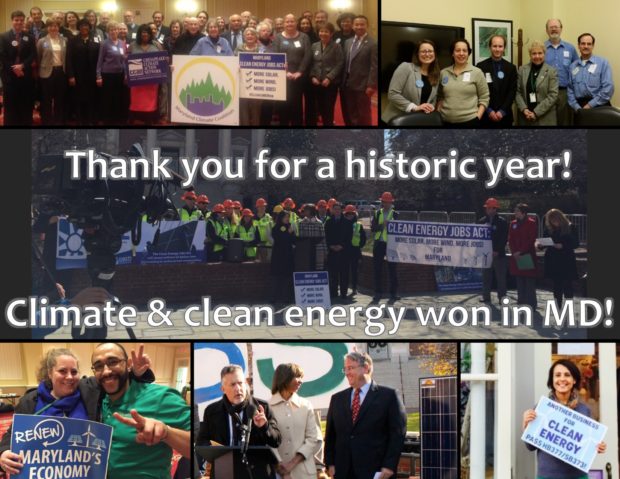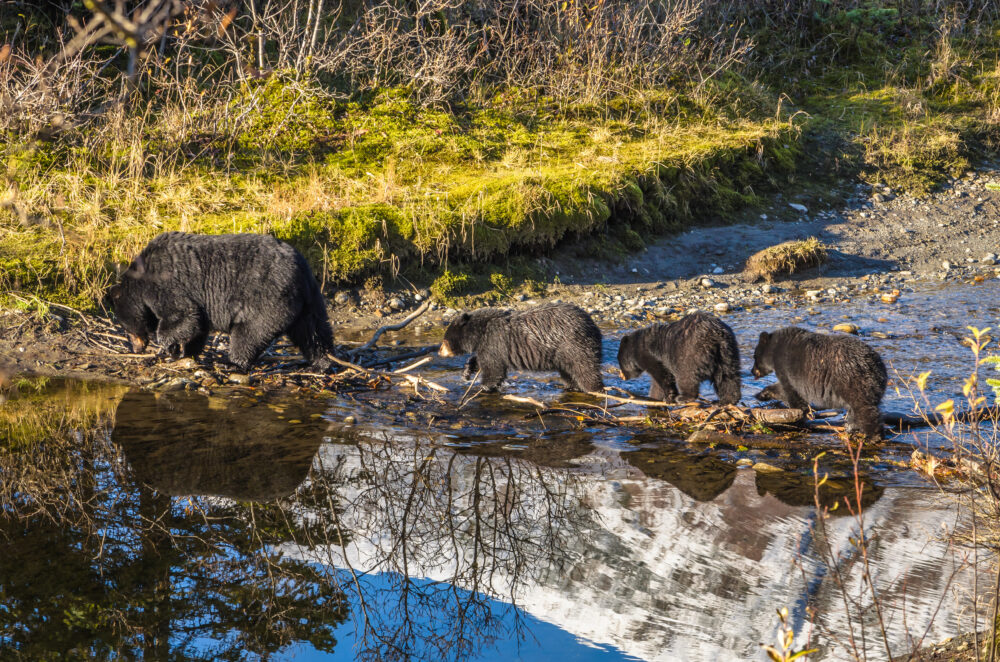We have much more to do and your continued support is needed now more than ever.
Historic Year for Climate Action in Maryland

Maryland’s General Assembly recently wrapped up a banner legislative session for climate and clean energy policies.
The legislature passed the Clean Energy Jobs Act (SB 921/HB 1106) that will increase Maryland’s use of renewable energy sources like wind and solar to 25% by the year 2020, sending it on to Governor Larry Hogan’s desk for consideration.
The accelerated renewable target, up from 20% by 2022, ranks Maryland sixth nationally in terms of ramping up renewable energy use by 2020, right behind Vermont, California, Hawaii, New York, and Connecticut.
Maryland’s legislature also passed the landmark Greenhouse Gas Emissions Reduction Act of 2016 (SB 323/HB 610), renewing the 2009 Maryland law which sets a goal to reduce climate-polluting greenhouse gas emissions statewide by 25% by 2020. The 2016 bill will also further extended the goal to a 40% reduction by 2030, requiring long-term cuts in pollution and positioning Maryland just behind California and New York for climate goals. This bill has already been signed into law by Governor Hogan.

Climate change is the single greatest existing threat to wildlife, wild places, and communities. The best way we can help protect wildlife from climate change is by reducing the amount of climate pollution we generate, most of which comes from burning fossil fuels. State action like Maryland’s to advance clean energy and climate action is critical to helping the United States reduce climate pollution and limiting the impact of climate change on communities and wildlife.
Climate change’s threat to Maryland is significant. The Free State has more than 3,000 miles of tidal shoreline, making Maryland is the third most vulnerable state to sea level rise — one of the major consequences of climate change. A 2013 report from the Maryland Climate Change Commission found that sea level rise in Maryland could be as high as 2 feet by 2050 and more than 5 feet by the end of the century if greenhouse gas emissions don’t decline. To put that in perspective, 5 feet of sea level rise would put 3,700 miles of road underwater.
Rising sea levels mean a loss of beaches and tidal flats – important habitat and foraging areas for waterfowl and migrating birds. Estuaries and coastal wetlands which facilitate higher levels of biodiversity are being inundated. Warming water and increasing ocean acidity threaten Maryland’s treasured oysters.
The National Wildlife Federation joins our partners in the Maryland Climate Coalition in celebrating this landmark year for climate and clean energy action in Maryland. The broad, bipartisan support for these climate protection measures shows that Marylanders are committed to working together on climate solutions that protect wildlife and communities, and strengthen our economy.
Show your support for these historic policies by thanking your Maryland senators and delegates. Please also thank Governor Hogan for signing the Greenhouse Gas Reduction Act and ask him to also sign the Clean Energy Jobs Act.




















